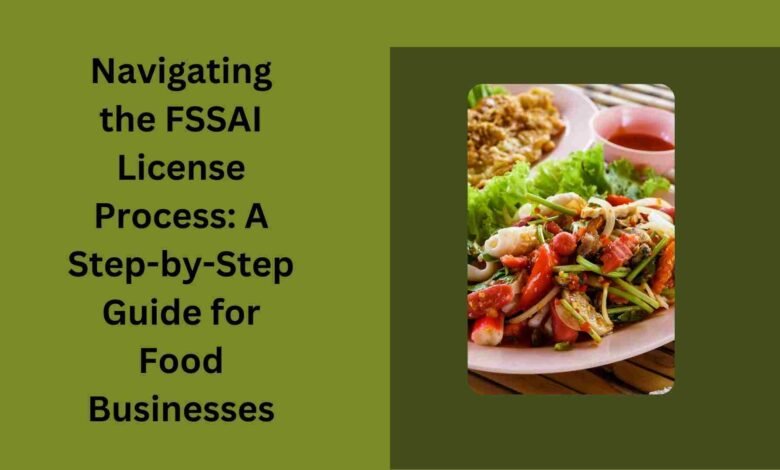
The FSSAI license, which stands for the Food Safety and Standards Authority of India license, is a mandatory certification required for all food businesses operating in India. It is issued by the Food Safety and Standards Authority of India (FSSAI), which is an autonomous body established under the Ministry of Health & Family Welfare, Government of India.
Navigating the FSSAI license process can seem daunting, but with the right guidance, it can be streamlined. Here’s a step-by-step guide to help food businesses navigate through this process efficiently:
Step 1: Determine the Type of FSSAI License Required
The FSSAI offers three different types of licenses: Basic Registration, State License, and Central License. The type of license required depends on the size and nature of the food business. Small-scale businesses may only need Basic Registration, while larger enterprises operating in multiple states may require a State or Central License.
Step 2: Fulfill Eligibility Criteria
Before applying for the FSSAI license, ensure that your food business meets all the eligibility criteria set by the FSSAI. This includes factors such as infrastructure, personnel, and turnover. Meeting these criteria is essential for a successful application.
Step 3: Prepare Documentation
Gather all the necessary documents required for the FSSAI license application. These may include identity proof, address proof, proof of possession of premises, blueprint/layout plan of the processing unit, and details of food products to be manufactured or sold.
Step 4: Fill Out the Application Form
Complete the FSSAI license application form accurately and comprehensively. Provide all the required information, ensuring that it is correct and up-to-date. Any discrepancies or incomplete information may lead to delays in the processing of your application.
Step 5: Submit the Application
Once the application form is filled out and all necessary documents are prepared, apply to the designated FSSAI office either online or offline, depending on the mode of application chosen.
Step 6: Await Inspection
After applying, the FSSAI authorities may inspect your food business premises to verify compliance with food safety standards and regulations. Cooperate fully during this inspection process to ensure a smooth review.
Step 7: Receive the FSSAI License
If everything is in order and your application is approved, you will receive the FSSAI license for your food business. Display the license prominently at your premises as required by law.
Step 8: Ensure Compliance with FSSAI Regulations
After receiving the FSSAI license, it’s crucial to ensure ongoing compliance with FSSAI regulations. Stay updated with any changes or updates in food safety standards and regulations issued by the FSSAI. Regularly review and assess your food safety management practices to ensure they meet or exceed the required standards.
Step 9: Maintain Records
As part of FSSAI compliance, maintain comprehensive records of all aspects of your food business operations, including procurement, production, storage, and distribution. This includes records of raw materials, ingredients, production processes, packaging materials, and distribution channels. Accurate record-keeping not only helps in demonstrating compliance but also assists in traceability in case of any food safety incidents.
Step 10: Train Personnel
Invest in training and educating your staff about food safety practices and procedures. Ensure that all employees handling food are adequately trained in hygiene practices, sanitation, and proper food-handling techniques. Regular training sessions and refresher courses can help reinforce good practices and minimize the risk of foodborne illnesses.
Step 11: Implement Quality Control Measures
Establish robust quality control measures to monitor the quality and safety of your food products throughout the production process. Conduct regular quality checks, inspections, and testing of raw materials, finished products, and production facilities to identify and address any potential hazards or deviations from standards.
Step 12: Respond to Audits and Inspections
Be prepared to undergo periodic audits and inspections conducted by the FSSAI or other regulatory authorities. Cooperate fully during these inspections and address any findings or recommendations promptly. Implement corrective actions as necessary to ensure ongoing compliance with food safety regulations.
Note: You can also Apply for Fssai Annual Return
Step 13: Renew FSSAI License Timely
The FSSAI license is typically valid for a specified period, after which it needs to be renewed. Ensure that you renew your FSSAI license well in advance of the expiry date to avoid any disruptions in your food business operations. Keep track of the renewal deadlines and submit the required documentation and fees on time.
Conclusion
Navigating the FSSAI license process is essential for food businesses to ensure compliance with food safety standards and regulations in India. By following this step-by-step guide, businesses can streamline the application process and obtain the necessary licenses efficiently. Remember, obtaining the FSSAI license not only demonstrates your commitment to food safety but also builds trust with consumers, ultimately contributing to the success and growth of your food business.



